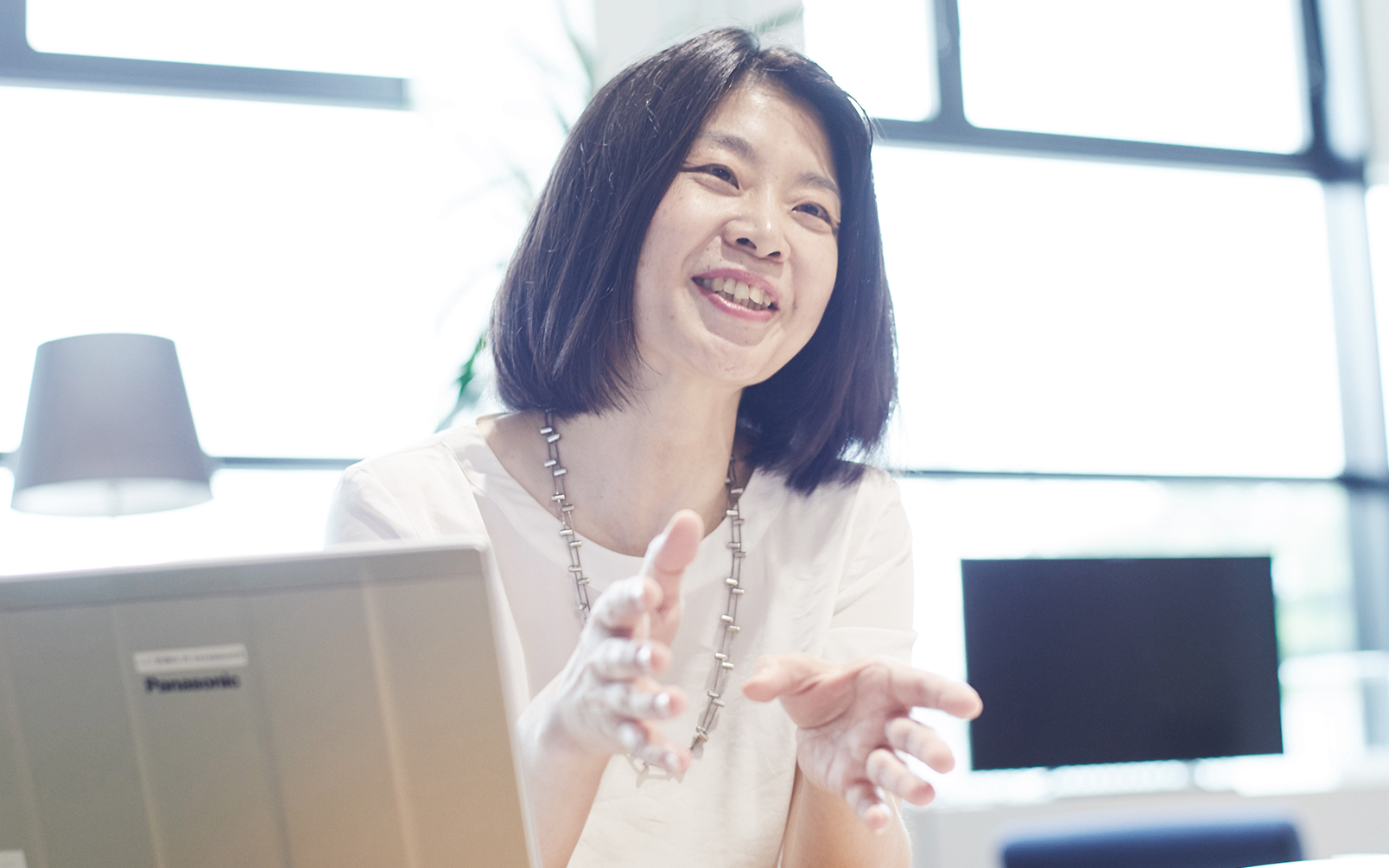We're aiming for a future in which all kinds of people can participate in a positive and energetic way.
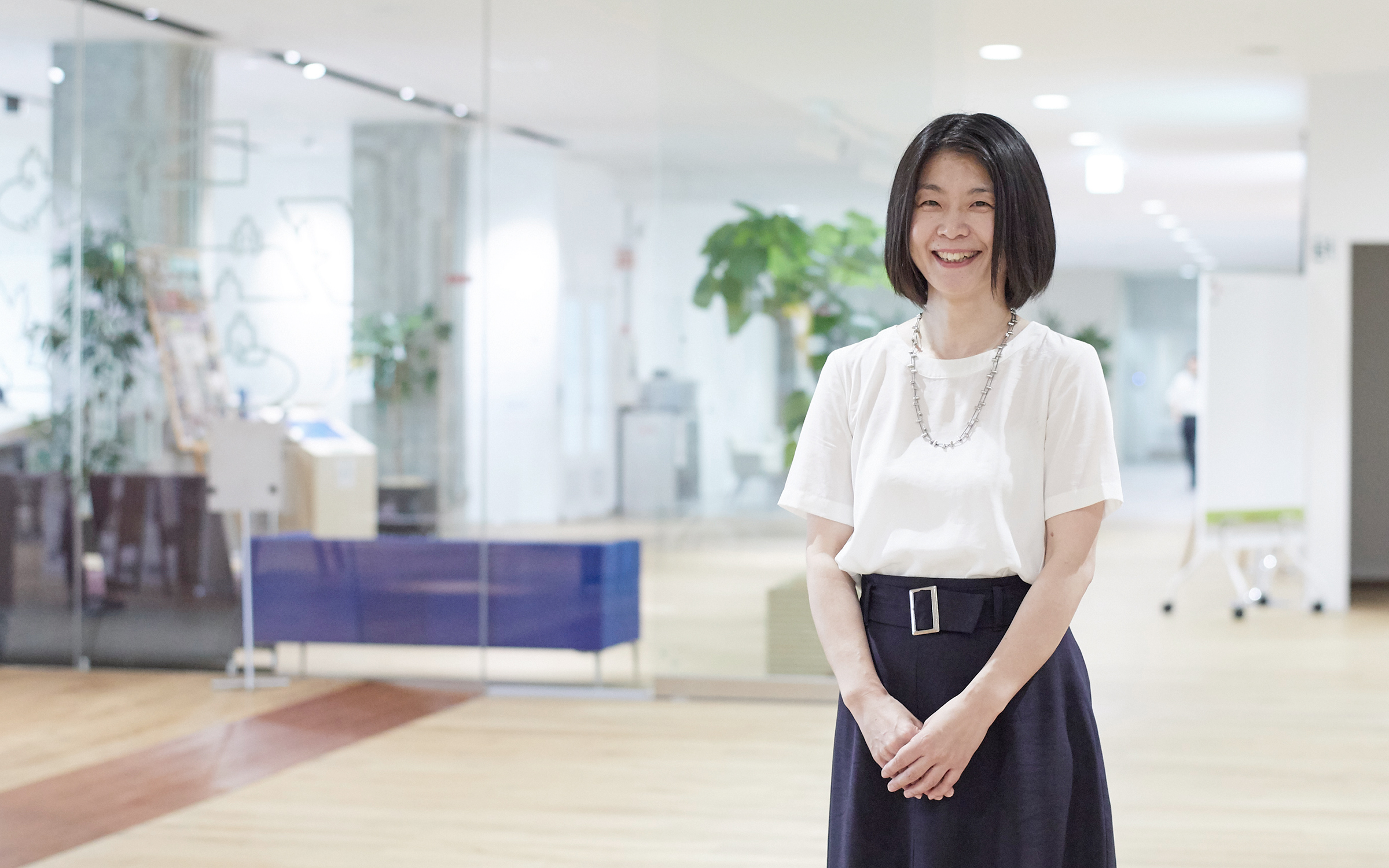

- Yoko Nakao
Born in Hyogo Prefecture. Joined Panasonic in 1992. Since 2005 has been consistently responsible for a wide range of projects to develop and promote universal design (UD), with particular focus on consumer electronics. Today Ms. Nakao serves concurrently as manager of the Advanced Development Section of the Design Strategy Office and as Chief UD Development Officer.
What does a day's work look like for Yoko Nakao?
As head of the UD Promotion Bureau for the Panasonic Group, I handle all kinds of activities that touch on UD. My main work consists of disseminating information about the latest developments in UD research and Panasonic's expertise in UD to a wide audience, both inside Panasonic and elsewhere. A lot of product developers come to me for advice about how to incorporate UD into their products, so I'm constantly offering opinions, running surveys and seeking out the perspectives of specialists. Our J Concept series of products for the elderly is one I helped develop as an UD specialist. I sometimes submit proposals regarding UD considerations in user manuals. I'm constantly pursuing leading-edge research in UD and applying those findings in products and services, driving the advancement of Panasonic UD.

Among my various communication activities, I go out to schools to teach classes and deliver lectures in-house and elsewhere, all for the purpose of spreading the adoption of UD. I speak about UD at international conferences and industry association meetings. I share a lot of information freely with other companies, such as the story of how Panasonic invented the first UD font, how to make pictographs clearer and more intuitive, how to build in consideration for the needs of the elderly, and so on. All of these efforts are geared to achieving a society that places greater priority on UD. I even share knowledge and technology at UD-related trade fairs. My duties also include operating Panasonic's UD website (http://panasonic.com/jp/ud) and producing brochures. This website and literature has earned widespread praise, even capturing the 2017 IAUD Award.
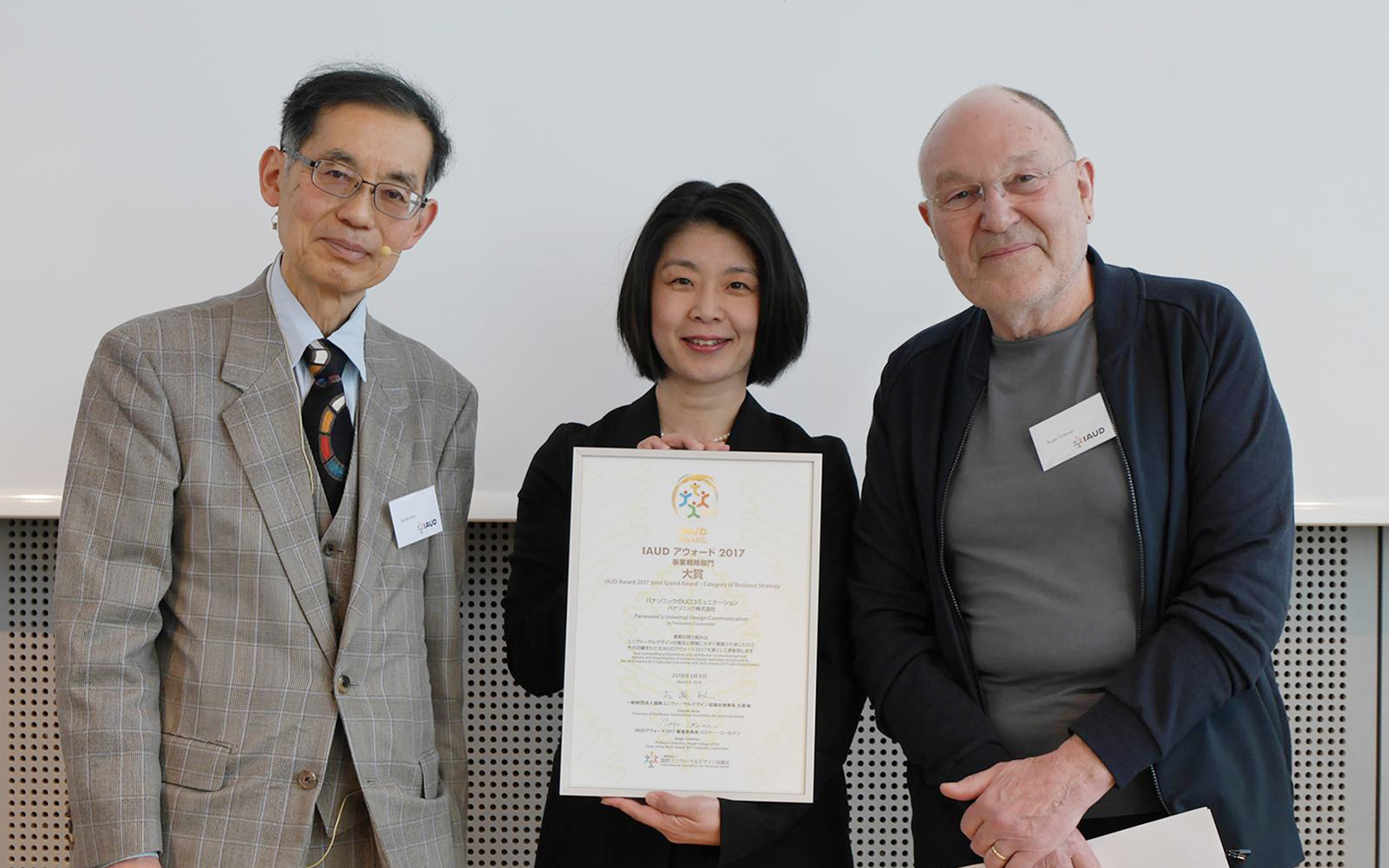
What sequence of events led you to a career in UD?
Originally I was a consumer-electronics designer. I took two childcare leaves at that time. I felt frustrated because I fell far behind in my work, and also felt bad because of the inconvenience to my co-workers. But I took two whole years off, devoting myself to housework and child-rearing, becoming a housewife through and through. When I returned to work, I found that I had a valuable strength as someone who could propose consumer electronics for cooking and housework from the perspective of someone who uses those products routinely. I also had small children, and my experience being nervous for my children's safety played a valuable role in developing products with “kid-friendly” design, suited to children and child-rearing. I think the satisfaction of doing the things I knew I could do was what launched me on my current career.
Can you give us some examples of the UD work you do?
I'll give you an example that involves smooth, flat touch-panel buttons. These buttons are easy to maintain and can be operated with just a light touch, but for people with poor eyesight they can be hard to see, and that means hard to use. Seeing the need for a UD solution, I developed a sticker-type button for IH cooking heaters. The button can be affixed after the IH heater is purchased, it's embossed with raised symbols, and the material is resistant to heat and oil. With this original Panasonic sticker, vision-impaired people can adjust settings with ease, as they know immediately by touch which button they are pressing.

Touch panels are a different matter. You can't put stickers on them because they change position on the screen. To address this problem I interviewed people at Nippon Lighthouse Welfare Center for the Blind, a support organization for the visually impaired. Their advice was that, as long as other products were available that could be operated using raised buttons, there was no reason to go to undue efforts making touch panels easy for the visually impaired to use. In fact, they said, it would be better to make each type of product easier to use in its own way. This case taught me the powerful lesson that UD can often be achieved simply by offering choices.
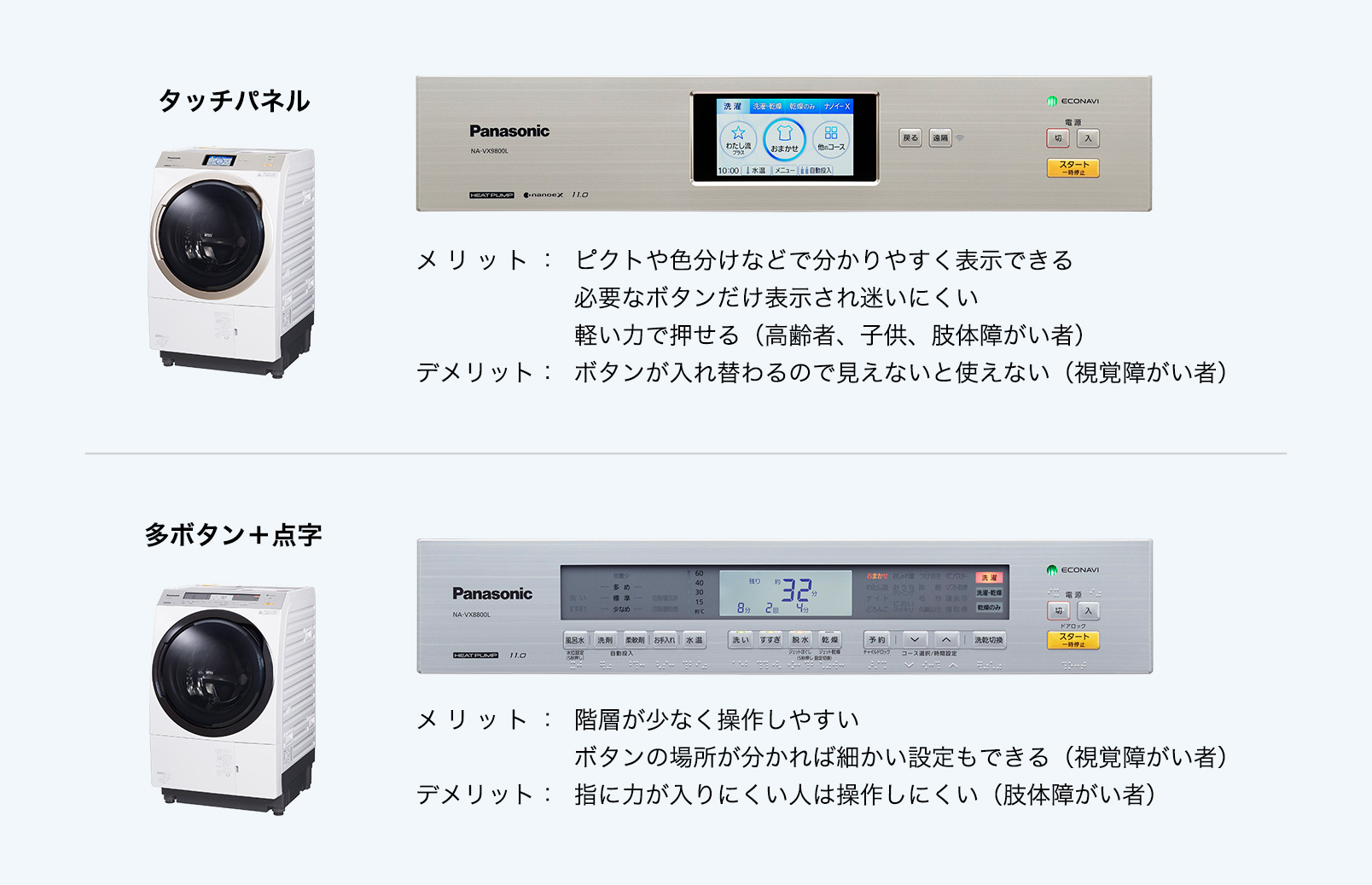
I've implemented other improvements as well. Our surveys of orthopedically impaired people revealed that virtually everyone ties the remote controllers to a string attached to their beds or around their wrists, for easy retrieval in case they drop them. Taking this cue, I had remote controllers equipped with strap holes. Also, some people press the wrong buttons because their hands shake, so we included a feature for making the buttons on the touch panel larger.
Small considerations such as these can make products easier to use for large numbers of people. It's important to seek out these opportunities, turn them into real solutions and then tell the world about them.
I often apply my knowledge of consumer electronics to B2B solutions as well. For example, we applied UD to the immigration screening stations at airports. Signs are designed so that non-Japanese people, the elderly and the color-blind, as well as people of various heights, can all read them with ease.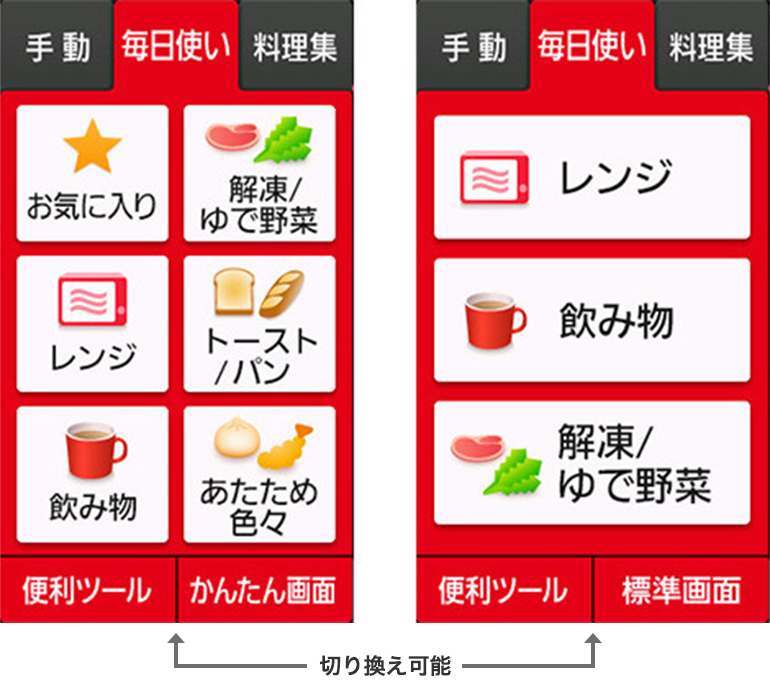
Related URL:
https://www.panasonic.com/jp/corporate/wonders/wondersolutions/kaoninsho.html
Panasonic applies UD in an incredibly wide range of fields.
Small considerations such as these can make products easier to use for large numbers of people. It's important to seek out these opportunities, turn them into real solutions and then tell the world about them.
I often apply my knowledge of consumer electronics to B2B solutions as well. For example, we applied UD to the immigration screening stations at airports. Signs are designed so that non-Japanese people, the elderly and the color-blind, as well as people of various heights, can all read them with ease.
Related URL:
https://www.panasonic.com/jp/corporate/wonders/wondersolutions/kaoninsho.html
Panasonic applies UD in an incredibly wide range of fields.
How do you apply UD to benefit communities?
One cause I'm expending a lot of energy on now is enabling the elderly to play active and dynamic roles in society. To that end I've been asking experts in a wide range of fields to share their knowledge. To disseminate the useful and valuable information that we've gained in that process, we're publishing a website filled with UD content called Active Life Planning Blog (https://www.panasonic.com/jp/corporate/technology-design/ud/ikiiki.html). We hope it will support the elderly in pursuing more active lives.
In the course of these efforts I learned that cooking is an activity that can help prevent age-related illnesses such as Alzheimer's. I thought it would be even better if elderly people could cook using appliances incorporating a variety of safety features, so we launched a cooking class at a serviced residence for the elderly. Though reticent at first, the elderly people in our class were soon using knives with consummate skill. As they ate the food they had prepared, they beamed with pleasure. The power of cooking to revitalize people really surprised me.
Cooking class report:
https://www.panasonic.com/jp/corporate/technology-design/ud/ikiiki/index_07_2.html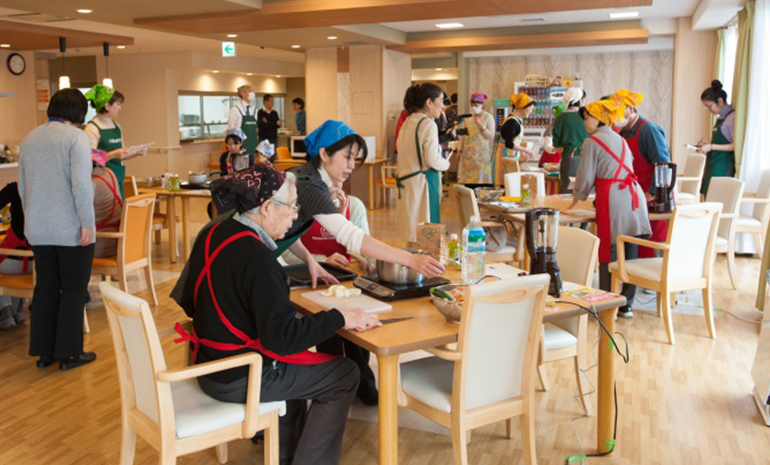

In the course of these efforts I learned that cooking is an activity that can help prevent age-related illnesses such as Alzheimer's. I thought it would be even better if elderly people could cook using appliances incorporating a variety of safety features, so we launched a cooking class at a serviced residence for the elderly. Though reticent at first, the elderly people in our class were soon using knives with consummate skill. As they ate the food they had prepared, they beamed with pleasure. The power of cooking to revitalize people really surprised me.
Cooking class report:
https://www.panasonic.com/jp/corporate/technology-design/ud/ikiiki/index_07_2.html
I'm also working on efforts to reduce the incidence of serious accidents in children. We share information on children's accidents and compile case studies of product improvements, but often the problems can't be solved by focusing on products alone. Some specialists told me that raising awareness of accidents was important. I decided to publish the Kids Design Book, which included a set of cards that children and their parents could use to learn about accidents in the home, whether or not products had been improved. Calling attention to the dangers of products that did not yet have solutions took a bit of courage for us as a manufacturer, but I won the agreement of people in the Division and got the project completed. Now our user manuals include easy-to-understand pictorial explanations of dangers to children in the home.
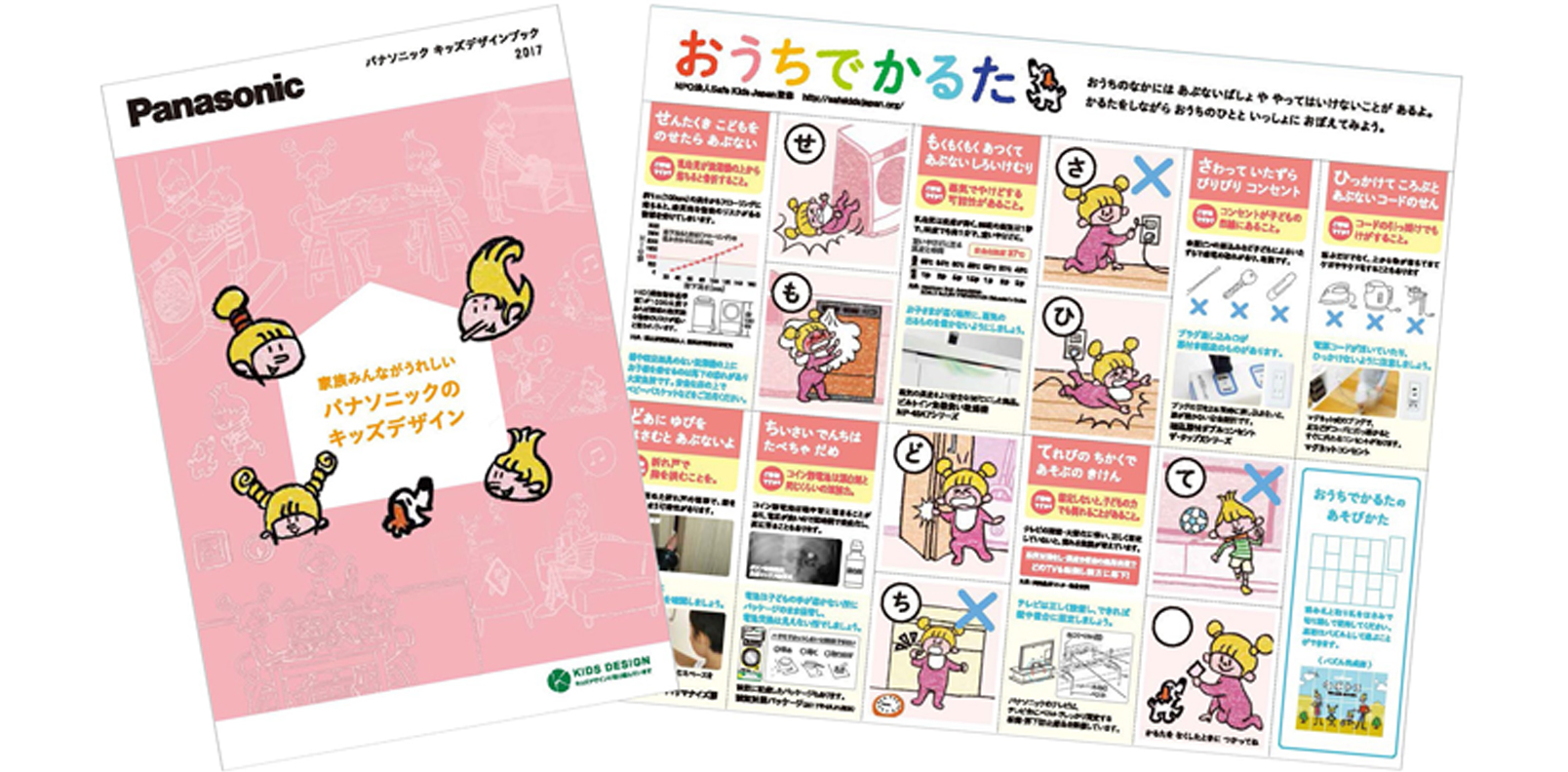
Kids Design Book:
https://panasonic.co.jp/design/kids/pdf/Panasonic-KidsDesign2018.pdf
What are the things Panasonic wants to achieve with UD?
The founder of Panasonic, Konosuke Matsushita, recognized the importance of UD when he explained in 1942: “Our basic commitment must be to create products that incorporate a great many virtues, including kindness, charm, grace and flexibility, bringing delight to consumers.” UD is in the DNA of Panasonic. Today I want UD to play a vital role in solving many of Social problems. UD can provide solutions to many of the issues confronting Japan today, including an aging society, low birth rate, and the task of building a society in which a diverse range of people can engage actively. I think the solutions we devise can make a difference at the global level as well.
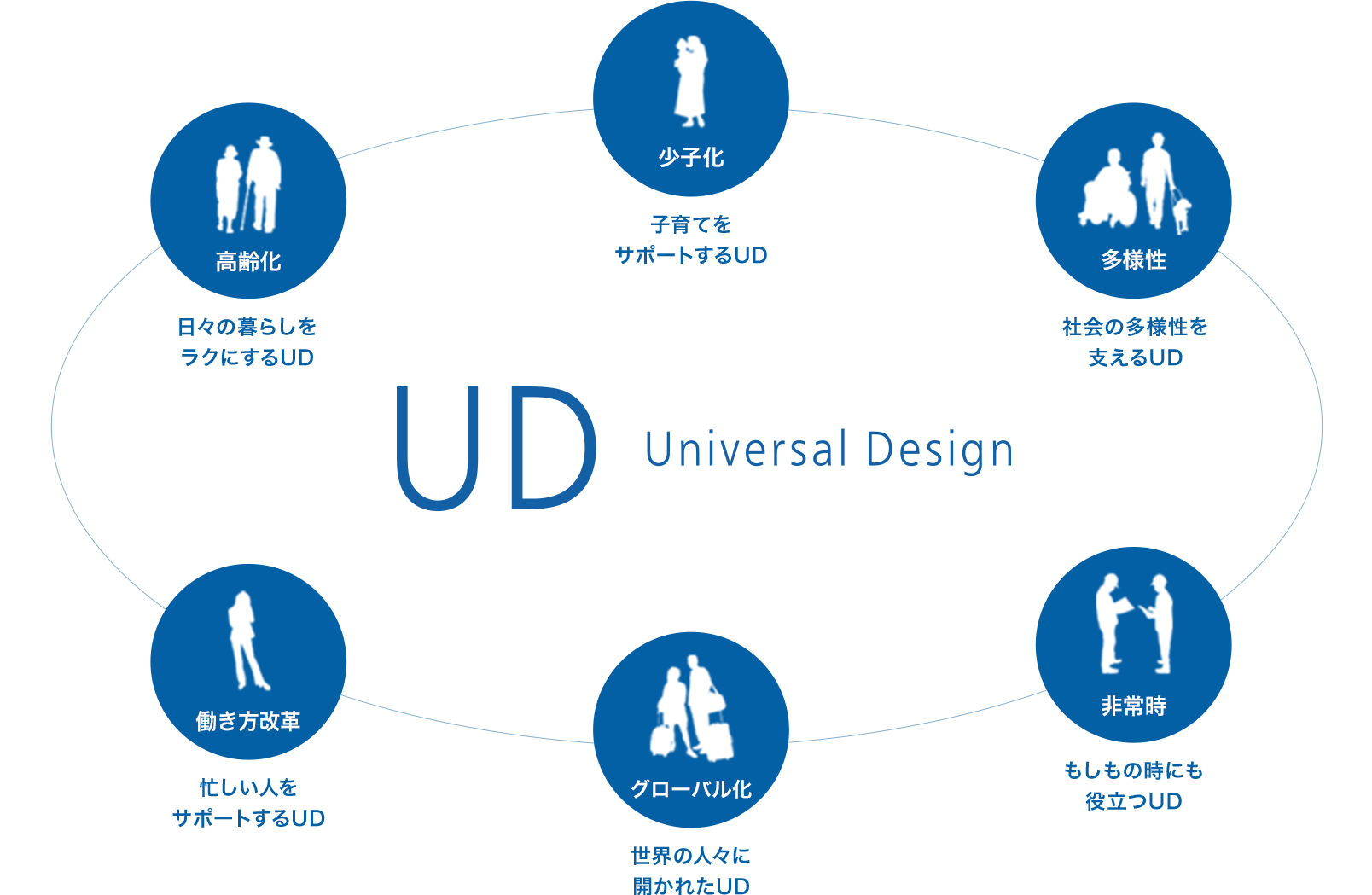
Panasonic is active in an incredible range of business spaces, not only in consumer electronics but also extending to housing, automobiles, B2B services and more. With such breadth of operations our ability to contribute to society is huge. Earlier I talked about presenting cooking classes to prevent Alzheimer's. This example illustrates how quickly Panasonic can devise ideal solutions for each challenge, by consulting with (for example) departments responsible for urban development and recipes for cooking appliances. Countless technologies are involved in achieving UD today, including voice-activated operation and facial recognition to detect when a person is in danger. I feel truly fortunate to be working in the field of UD at Panasonic.
It's said that disabilities are the results of interactions between factors inherent in individuals and factors in the environment; if we can create environments and products that respond to people's needs, disabilities might never manifest themselves. In an era of declining birthrates, an aging demographic profile and growing numbers of foreign visitors to Japan, I think the need for UD will continue to intensify. I want to continue to advance the implementation of UD in a wide range of products and services, to build a positive and dynamic future for a diverse range of people.
